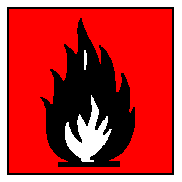International Chemical Safety Cards
| TRIETHYLAMINE | ICSC: 0203 |
| TRIETHYLAMINE N,N-Diethylethanamine C6H15N/(C2H5)3N Molecular mass: 101.2 CAS # 121-44-8 RTECS # YE0175000 ICSC # 0203 UN # 1296 EC # 612-004-00-5 |
 |
 |
| TYPES OF HAZARD/ EXPOSURE |
ACUTE HAZARDS/ SYMPTOMS |
PREVENTION | FIRST AID/ FIRE FIGHTING |
| FIRE | Highly flammable. Gives
off irritating or toxic fumes (or gases) in a fire. |
NO open flames, NO sparks,
and NO smoking. |
Alcohol-resistant foam,
powder, AFFF, foam, carbon dioxide. |
| EXPLOSION | Vapour/air mixtures are
explosive. |
Closed system, ventilation,
explosion-proof electrical equipment and lighting. |
In case of fire: keep
drums, etc., cool by spraying with water. |
| EXPOSURE | |
STRICT HYGIENE! AVOID
EXPOSURE OF ADOLESCENTS AND CHILDREN! |
|
| INHALATION | Cough. Sore throat.
Shortness of breath. Laboured breathing. Headache. Dizziness. Weakness.
Unconsciousness. Nausea. |
Ventilation, local exhaust,
or breathing protection. |
Fresh air, rest.
Half-upright position. Refer for medical attention. |
| SKIN | MAY BE ABSORBED! Redness.
Skin burns. Pain. |
Protective gloves.
Protective clothing. |
Remove contaminated
clothes. Rinse skin with plenty of water or shower. Refer for medical attention. |
| EYES | Pain. Redness. Blurred
vision. Blue haze and halo. Temporary loss of vision. Severe deep burns. |
Face shield or eye
protection in combination with breathing protection. |
First rinse with plenty of
water for several minutes (remove contact lenses if easily possible), then take to a
doctor. |
| INGESTION | Abdominal pain. Burning
sensation. Diarrhoea. Shock or collapse. Vomiting (further see Inhalation). |
Do not eat, drink, or smoke
during work. |
Rinse mouth. Do NOT induce
vomiting. Refer for medical attention. |
| SPILLAGE DISPOSAL | STORAGE | PACKAGING & LABELLING | ||
| Evacuate danger area!
Consult an expert! Ventilation. Collect leaking liquid in sealable containers. Absorb
remaining liquid in sand or inert absorbent and remove to safe place Do NOT wash away into
sewer (extra personal protection: complete protective clothing including self-contained
breathing apparatus). |
Fireproof. Separated from
strong oxidants, strong acids, food and feedstuffs. |
Do not transport with food
and feedstuffs. F symbol Xi symbol R: 11-36/37 S: (2-)16-26-29 UN Hazard Class: 3 UN Subsidiary Risks: 8 UN Packing Group: II |
||
| SEE IMPORTANT INFORMATION ON BACK | ||||
|
||||